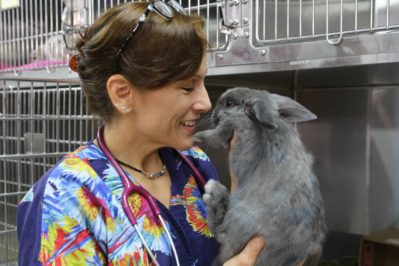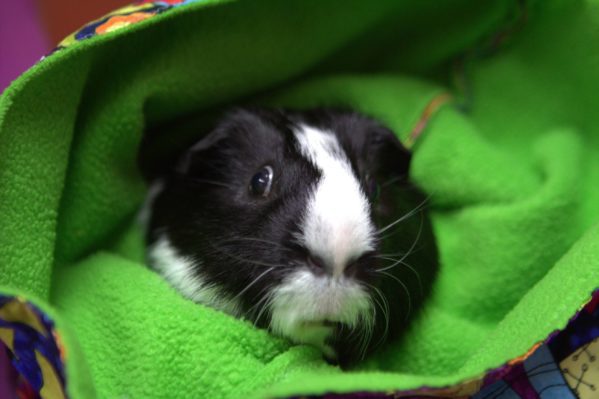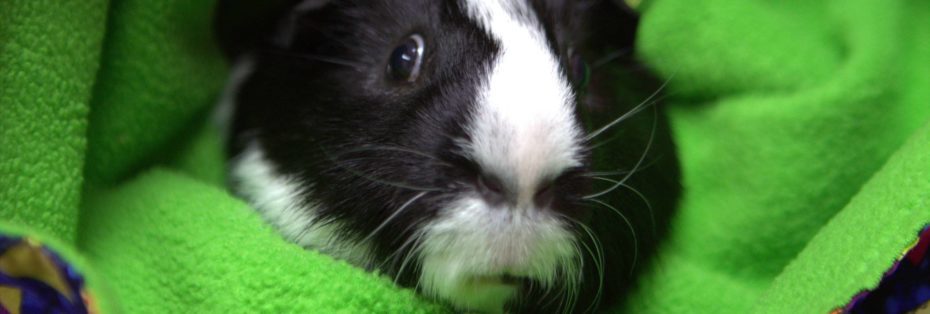INTERVIEW: Dr. K caters to all types of exotic animals on Nat Geo WILD show

On Dr. K’s Exotic Animal ER, currently in its third season on Nat Geo WILD, Dr. Susan Kelleher has her hands full with a wide variety of species that come through her door. From Amazon parrots that have endured a dog attack to a mischievous lemur, it would seem Dr. K and her team of expert veterinarians have seen it all.
On the third season of the reality series, Dr. K’s challenges are mounting. On Saturday, June 11 at 9 p.m., “Operation Skunk” is in full force as the team deals with the limping mammal with a distinctive odor. On Saturday, June 18 at 9 p.m., “Snake, Rattle and Roll” depicts an albino ball python that has a respiratory infection.
It’s all in a day’s work for Kelleher.
Recently, Hollywood Soapbox exchanged emails with Dr. K about the second season of her reality series and the many species she deals with on a daily basis. Questions and answers have been slightly edited for style.
When did it first click for you that a profession and life with animals was the way to go?
It sounds moderately corny, but I have wanted to be a veterinarian since I was very, very young. I can’t remember wanting to be anything else.

What’s the biggest challenge of running an exotic animal ER?
The biggest challenge of running an exotic animal practice is the fragility of the patients. Many/most are “prey animals.” They are very good at hiding or masking their clinical signs of illness. They often come in much much sicker than the owners perceive that they are. Some of the challenges are teaching staff (i.e. receptionists) to recognize that an animal is in distress, and the owner shouldn’t just take a seat in the waiting room and wait to be seen. The animal literally needs to be rushed to the back, and put on oxygen and often warmed up.
Early on, a big challenge was having references to help me with things I had never seen before — certain species or conditions. I started practicing 21 years ago. I still see things on a weekly basis that I’ve never seen before, but now I have a great network of other exotic animal vets online or available by phone, the Internet as well as an extensive reference library.
On the recent season, there have been several close calls and strange cases. How do you prepare for what might walk in the front door?
We train the staff to recognize what can wait in the waiting room and what needs to be rushed right to the back to be evaluated by a trained doctor. This is critical due to the fact I mentioned about about the prey species. We prepare by having a well organized treatment area, and our techs are the best I have ever worked with — university and other private practices I have worked included. They are HIGHLY skilled at restraint, intubation, IV catheter placement and assisting the doctors.
What’s the most common (and preventable) injury / sickness that you see?
Poor husbandry — feeding the wrong food — many species, not soaking the animal regularly — reptiles, not getting sunlight or a having a bulb to provide UVB. I would say at least 50 percent of our cases are due to these problems if not closer to 75 percent. We place a huge focus on preventive care, proper diet and husbandry and behavior.
Click here for a clip from Dr. K’s Exotic Animal ER.
What advice would you give to first-time exotic animal owners?
BEFORE obtaining any pet, but especially an avian or exotic pet, please make a consultation appointment with the vet you plan on taking the pet to. They can advise about source of pet, diet, care, husbandry and common medical problems to watch out for. After obtaining the pet, please make a wellness appointment with the vet. This will be a great advantage to you.
If the animal has a clean bill of health, you can get pet insurance through Nationwide. We strongly recommend this. We have nothing to do with the insurance. You pay your bill up front, but for premiums of around $14 per month you can cover some major pet problems and often get about 80 percent of your bill back from the insurance.
I share this because of feedback I’ve gotten from clients about how grateful [they are] they had pet insurance and didn’t have to stress or stretch finances to take care of their pet when it was in distress.
Are there people who should not own these animals because of the difficulty in raising and maintaining them with love and proper resources?
With the proper knowledge and guidance from a veterinarian who takes care of those species, many of the pets I see can live very high quality lives. Of all the species I see, I believe large exotic cats and primates are the most difficult for owners to provide the proper care and have the proper resources for.
By John Soltes / Publisher / John@HollywoodSoapbox.com
Dr. K’s Exotic Animal ER continues on Nat Geo WILD Saturdays at 9 p.m. Click here for more information.

